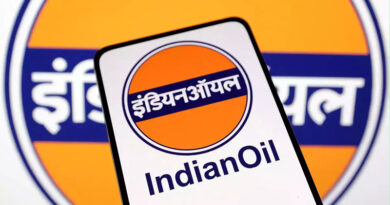Google Pixel phone ‘designed for economic downturn’
Google’s hardware chief has said its latest flagship smartphone was made to go on sale during an economic decline.
As an outcome, the Pixel 5 has left some of its predecessor’s highlighted features and runs on a slower chip in order to be sold at lower prices.
Nevertheless, it does have 5G connectivity and some advance photography capabilities.
Critics say it will face tough battle from other mid-range Android phones, but the added suite of Google services could help.
“To not bring to market a true flagship demonstrates Google is now thinking about the market in a very different way than it was last year,” said Ben Stanton from the tech consultancy Canalys.
“And merely on a price-specs basis, Google will likely lose to Samsung and Chinese competitors.
“Its key selling point, however, remains that it provides a stock Android experience with superfast updates.”
This is a remark about the fact that many other Android phone-makers place their own proprietary user interfaces on top of Google’s operating system, and usually take longer time to launch software updates.
The Pixel 5 will cost $699/£599, and has a 6 inch (15.2 cm) display and 128 GB of storage. This is cheaper if compared to the last year’s top-class 6.3 inch Pixel 4XL, priced at $999/£929.
Besides that, Google also uncovered a 5G-enabled version of its existing Pixel 4a, which will cost $641/£499.
Age of coronavirus
Smartphone prototypes are typically decided many months before the actual product go on sale, in order to obtain the required components and carry out tests.
The senior vice president of devices and services at Google confirmed that the Pixel 5’s features had been decided upon before the COVID-19 pandemic began.
But he said an intentional call had been taken to offer a 5G-enabled phone at “an affordable price.”
“What the world doesn’t seem like it needs right now is another $1,000 phone,” said Rick Osterloh.
“Obviously nobody expected a pandemic, but we really did think that the world was possibly headed for an economic downturn… and it only further emphasized our point of view that this is the right thing.”
Tech dropped from the Pixel 4 includes the Soli radar chip, which Google had taken five years to develop. The problem was that when the user tried and allowed gesture controls, it was automatically turning on the older phone’s screen.
Last year’s face-unlock sensors have also been jettisoned, with a comeback to the Pixel 3’s fingerprint sensor on the back of the Pixel 5.
“These technologies will be used in the future, but they’re very expensive,” Mr Osterloh said.
The Pixel5’s Snapdragon 765G chip is also reviewed as being slower and having slow graphics-processing performance than last year’s Snapdragon 855, however, Mr Osterloh said he didn’t think consumers would notice.
The improvements do make the device beneficial, including being able to provide a shallow-focus effect in “super low-light conditions.”
One of its rear cameras now comes with a winder angle lens than before. There are options for new video stabilization modes.
Moreover, the RAM memory has been increased to 8GB, which should help the device switch from task-to-task more smoothly.
And Google is bundling some of its subscription services including three months of its games-streaming platform Stadia and 100GB of online storage.
“Bundling three months of Stadia Pro cloud gaming with 5G Pixel phones is smart, because gamers benefit in particular from the 5G experience,” commented Ian Fogg from OpenSignal.
“But cloud gaming is still ‘early’ tech for mobile.”
We will get to see a good competition between Pixel 5, Samsung’s Galaxy S20FE and the upcoming OnePlus 8T – which are also being aimed at the “mid-market.”
Google shipped 4.6 million Pixel smartphones over the 12 months leading up to July 2020, according to research firm IDC.
That means a 37% drop over the same period a year before. However, a significant fall in demand for smartphones meant the brand still promoted from being ranked 16th to 12th in terms of market share for the final quarter of each period.
Google TV
Google also launched some other products on its virtual event that include Nest Audio – an upgraded version of its Google Home smart speaker, which now offers more bass and louder volumes.
Google is the second best-selling smart speaker brand in Western markets. But it is still predicted to sell about a third of the number of Amazon’s Echo speakers in the UK this year, according to research firm eMarketer.
Google also unveiled a new version of its television-streaming dongle, which is now named Chromecast with Google TV.
Unlike its predecessors, the gadget comes with its own remote control, which enables users to command their TV and soundbar using its buttons or voice commands as an alternative to using a smartphone application.
It also compiles movies and TV shows from the various channels each user subscribes to in order to bring its own recommendations.
The Apple TV set-top box and Amazon’s new Fire TV stick both offer similar functions.


